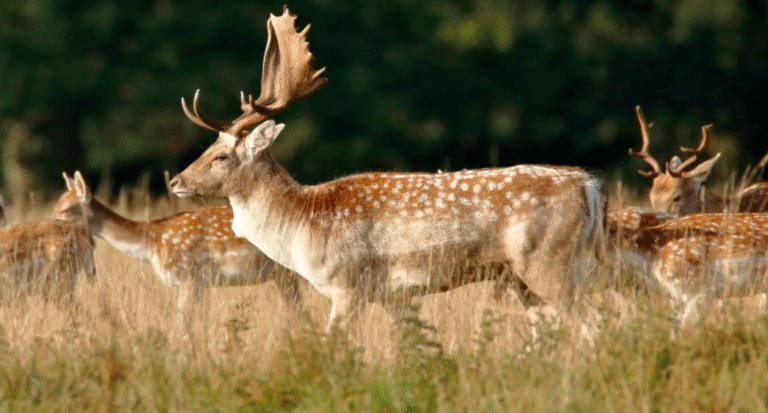Deer damage can feel inevitable, especially when you’ve put time and money into a garden, landscape, or orchard. But before you spend hours building a fence or experimenting with deterrents, there’s one step many property owners skip: learning which type of deer you’re dealing with.
That detail makes a bigger difference than you might expect. Deer species vary in size, behavior, diet, and even how they respond to fencing. Whether you live in a quiet wooded suburb or manage land near open fields, identifying your local deer can help you avoid costly trial and error.
Why Species-Specific Fencing Matters
Not all deer are created equal. Some are known for leaping over high fences. Others prefer to push or crawl through weak points. A solution that works in New York might fail in Colorado simply because the deer are different.
By matching your fencing strategy to the species in your region, you can choose the right material, height, and structure from the start, saving both time and money.
Meet the Common Deer of North America
Here’s a regional breakdown of the most common deer species in the U.S., along with how they typically behave around fencing.
1. White-Tailed Deer
- Region: Eastern U.S., Midwest, Southeast
- Traits: Highly adaptable; often comfortable near people
- Risks: Known to cause widespread garden and crop damage
- Fencing Tip: Require fences 7.5–8 feet high to block jumps
2. Mule Deer
- Region: Rockies, Great Plains, desert regions
- Traits: Larger body size, slower movement, often in small herds
- Risks: Strong enough to break through weak barriers
- Fencing Tip: Reinforced fencing with clear height visibility helps
3. Black-Tailed Deer
- Region: Pacific Northwest, Northern California
- Traits: Shy, night-movers; prefer dense forests
- Risks: Target shrubs, fruit trees, and ornamental plants
- Fencing Tip: Midweight mesh with bottom anchoring works well
4. Key Deer
- Region: Florida Keys
- Traits: Small, endangered species; federally protected
- Risks: Damage is limited, but legally sensitive
- Fencing Tip: Always check local laws before installing barriers
5. Sitka Deer
- Region: Coastal Alaska and British Columbia
- Traits: Thrive in cold; active in winter
- Risks: Strip bark and trees during colder months
- Fencing Tip: Use heavy-duty, weatherproof materials and bury the base
Signs You Can Spot on Your Property
If you’re unsure what kind of deer are visiting your land, you don’t need to see them directly. Here are a few subtle clues:
- Tracks: White-tailed deer leave heart-shaped tracks about 2–3 inches long. Mule deer tracks tend to be wider and more spread apart. Key deer leave smaller prints under 1.5 inches.
- Feeding Damage: Ragged leaves, torn bark, and snapped stems can all point to deer activity.
- Time of Day: Some deer are most active at dusk, while others feed early morning or during winter scarcity.
- Patterns: Trail cameras or simple track surveys can reveal where deer are entering and exiting.
Your local wildlife office or agricultural extension is another great resource to help confirm which species are common in your region.
Fence Design Based on Deer Behavior
Once you understand the species involved, fencing becomes much easier to plan. Here are some general rules to follow based on behavior:
- Jumpers (white-tailed and mule deer): Always go with 7.5 feet or taller fencing.
- Browsers (black-tailed deer): Don’t often jump, but will push through gaps or under loose mesh.
- Cold-climate grazers (like Sitka): Use buried fencing to prevent winter digging and weather damage.
- Protected species (Key deer): Opt for non-invasive barriers, like plants or motion deterrents, to comply with laws.
These adjustments ensure your fencing strategy matches the animals you’re actually dealing with, not a generic version of “deer.”
Want to Dive Deeper?
If you’d like a more detailed breakdown of regional species, track patterns, and behavioral traits, DeerFencing’s guide to American deer provides an easy-to-follow resource for landowners and gardeners alike. It connects local wildlife trends with fencing recommendations, helping readers avoid one-size-fits-all mistakes.
Final Thoughts
A fence is only as smart as the plan behind it. Knowing what kind of deer live in your area and how they interact with fencing is the first step toward protecting your property in a humane, effective way.
Before you buy fencing materials or try the latest deer repellent, take a closer look at your surroundings. Tracks, feeding signs, and timing patterns can tell you more than any packaging label. And with the right strategy, you can build a barrier that works with your land, not against it.
Because when it comes to deer control, the best solution is always the one that fits your local landscape.

